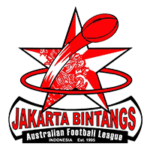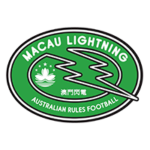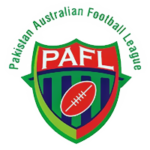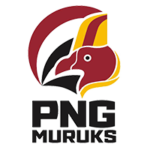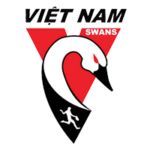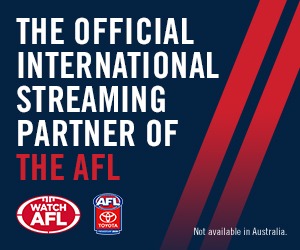AFL Asia was born on 27 July 2013. Today marks the 1st Birthday. Below, AFL Asia President, Phil Johns reflects.
Dear Presidents
Today, 27 July 2014 marks the 1st anniversary of the official establishment of AFL Asia. While the journey so far is still short, I believe, the significance will be judged long and far reaching.
In 5, 10, 20 or 50 years’ time, those who look in AFL Asia’s rear vision mirror will recognise that. By way of example, in 1989, a team in Hong Kong played their first ever footy match against an international team. Last month, the Dragons celebrated their 25th anniversary. If you want stuff to happen, you make it happen. Around Asia, there’s enough of us involved in footy to fairly safely declare that the Jeanie is out of the bottle.
The East Asia Australian Football League (EAAFL)
At the very end of 2012, there was an attempt to establish an East Asian Australian Football League (EAAFL). The EAAFL was always going to be rough – and without apology. The thinking behind John Kennedy’s famous line, “Don’t think; do!” lay behind our approach. Instead of theories about the best format for an Asian league based upon conjecture, we would have opinions and refinements based upon actual experience. And in the process, the footy clubs would start to see themselves as part of a bigger world and take more interest in each other.
Crunch!
Less than a month later (21 February 2013), we were broad-sided. The Herald Sun newspaper in Melbourne screamed, “Chinese players suffer abuse, racism in Guangzhou”. Then President of the Guangzhou Scorpions, Jon Hopper, provided a detailed account to the journalist explaining that the exact opposite was true. The “expats” were creating the environment for the Chinese players to play and were actively supporting them.
While the journalist offered an apology (and has since become a supporter of AFL Asia), it was a reminder that in Australia, attempts to promote footy in Asia were too easily dismissed as being nothing more than a bit of fun for a bunch of “expats”. Another way to look at it would be to explain that the nucleus of footy in Asia is a professional network of Australians living and working in the region who promote and play footy after the work is done.
But if footy in Asia isn’t telling the story, who is? Obviously, the people in Australia writing the stories about “expats” playing footy overseas.
The birth of AFL Asia
On 27 July, Asia’s presidents met, for the first time outside of an Asian Champs setting, to discuss the future of footy in Asia. At the meeting, it was agreed that an umbrella organisation, AFL Asia, would be born. AFL Asia’s purpose was to steer a path forward for footy in Asia. There was to be far greater sharing of information, contacts and knowledge between the member clubs; the Asian Champs was to be Asian footy’s most prestigious tournament. And the development of nationals as well as Auskick was to be a priority.
For the committee positions, Steve Morrish (Cambodian Eagles) was the Vice President and in charge of sponsorships (unfortunately Steve has now resigned from these positions). Mark Stennett (Vietnam Swans), a driving force behind the EAAFL and AFL Asia, was to become the Secretary (and has now relocated to Australia where he continues to do an outstanding job for AFL Asia). A somewhat reluctant Darren Whitfield (Hong Kong Dragons) was to become Treasurer until a replacement could be found (thankfully, Darren has become the permanent Treasurer and has also picked up the Vice President’s hat and is blitzing); Dennis Cornwell (Singapore Sharks) is responsible for Auskick and also has Phil Stevens from Thailand. The Auskick continues to grow in popularity and numbers across the region. I was elected as President.
A number of successes
Some highlights since that meeting a year ago today:
- We have five Asian teams participating in the AFL’s International Cup in Melbourne next month. Thanks to the phenomenal fundraising efforts of the Jakarta Bintangs, Borneo Bears, Bali Geckos and other parties, the Indonesian Garudas will make their debut. AFL Club, Port Adelaide, has underwritten the costs of sending TEAM CHINA. The development of TEAM CHINA has much to do with the Hong Kong Dragons and the SCAFL (South China Australian Football League). Japan, India and Pakistan will also be joining.
- On 16 August, the 8th Annual Indochina Cup will be played in Thailand. Alongside this tournament will be an Indochina All Stars team of nationals playing an exhibition match. The Nationals will come from Myanmar, Thailand, Lao, Cambodia and Vietnam. The team will be coached by West Coast Eagles star and 2006 Norm Smith Medallist, Andrew Embley. Andrew’s grandparents are Burmese. The objective is to grow this team to the point where Indochina can field a team at the next International Cup. Last week, World Footy News described this story as the first to come out for IC17.
- Auskick is also growing strongly around the region. Singapore and Hong Kong have 300 participants in each of their programs. Thailand hosted a regional tournament earlier in the year while this month, the Hong Kong Auskickers put on a show at half time during a Port Adelaide match on the Adelaide Oval.
- Media exposure has increased significantly – especially during AFL Asia’s ANZAC Round where five blockbusters were played in major theatres of significance: World War II – Kanchanaburi, Thailand; Balikpapan, Borneo; and Manila Philippines. Footy was played in the Vietnam War theatre of Vung Tau. Over in Phnom Penh, Cambodia, another game was played in the country where Australia has had a peace keeping presence with the UN. These events received coverage on television, radio, and print media – and there was a positive story in the Herald Sun. The Indonesian Garudas have been getting a stream of good publicity as have the Indian Tigers. Let’s wait until the International Cup for an explosion of media coverage.
- AFL Asia’s inaugural event back in Australia on 17 August – where we celebrate the five competing Asian teams and AFL Asia’s 1st Birthday, will hopefully reignite the passion, in all those people who have returned home, for Asian footy. If we all stand up at the same time, we will be very visible.
- The SCAFL (South China) continues to get stronger and is considered a major reason why the Chinese players have improved so much. The SEAFL (South East Asia) needs more work and the NEAFL (North East Asia) needs the participation of teams from Japan and Korea. Hopefully Japan will become possible – and we are still looking for someone to make it happen in South Korea.
- The Pakistan Markhors and Myanmar Fighting Cocks have both arrived in Asia footy.
- The AFL and media are now starting to deal directly with AFL Asia. Depending upon what is appropriate, we can answer their questions or refer them to the relevant club.
- Information is flowing far more freely between clubs.
AFL Asia is being noticed. AFL Asia is being listened to. Our clubs are supporting each other and promoting each other – and this is absolutely what we have to do in this swirling sea of soccer if we watt o claim any relevance.
Special thanks
I would like to offer special thanks to Mark Stennett and Darren Whitfield. Both have done absolutely amazing jobs for all the clubs in AFL Asia. Very lucky to have their service. Also a special mention to Dennis who looks after the Auskick. And if there is anyone else out there who would like to join the committee – especially for the sponsorship, please advise.
Other special mentions are Dean Reardon (Borneo Bears) for his work with hosting websites and email accounts. Albert Fullard for building the new website. Rooster for sponsoring the Fighting Cocks with their first set of jumpers. Flight Centre for being a sponsor.
I would also like to acknowledge the Thailand Tigers. Not only have they hosted the last three Asian Champs, but this year, they have been the only team to play the two new sides: the Pakistan and Myanmar teams. In addition, Thailand came up with the idea for an All Indochina Nationals team and the idea to import an AFL coach.
There’s lots of good stories about there about footy in Asia. Help spread the word.
How good’s footy in Asia!












